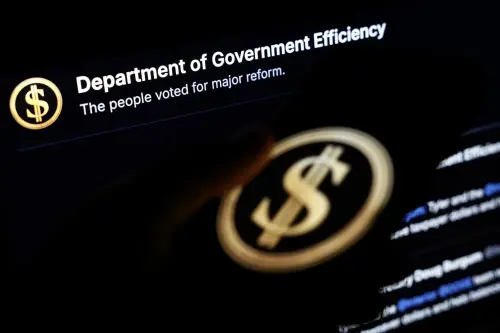In 2018, Michigan voters overwhelmingly supported a ballot measure that would amend the state’s constitution and expand voting rights for every citizen, including the right to vote by mail. This passage of the proposal was a testament to the enormous, bipartisan popularity of this long-accepted and convenient method of voting, and Michigan has executed several elections without controversy after these new rights were implemented.
With each successive election, the number of people taking advantage of those rights grew, culminating in the March 10 presidential primary. On that date nearly one million people voted by mail, nearly twice the number of absentee ballots cast in the 2016 presidential primary.
Then a global pandemic hit. Immediately, I worked with elections officials across the state to assess how to balance the public health with the right to vote. The result of our collaboration was the successful May 5 municipal elections—mostly for school bonds and millages, a form of tax assessment—which took place in 33 counties and were conducted primarily by mail. Most jurisdictions opened only one voting location on election day.
Things went incredibly well, breaking the record for turnout but with polling places calm, clean and safe on election day because 99 percent of ballots were cast by mail or dropbox. That success was due to several things: we worked hard to get the word out to everyone, early on, that they had a right to vote by mail and that doing so was safe and secure; thousands of extra election workers were recruited through our Democracy MVP campaign to ensure only those who felt comfortable working on Election Day would do so; and workers used PPE we provided. In precinct visits that day, as they tallied record turnout, I joked with election workers, “Where are all the voters?” It was an inspiring day, and provided a template for success.
That was, however, a much smaller election than either August or November will be. And to replicate that success, there are things I have asked from the state and federal government. Our system has been designed to process the majority of ballots by voters voting in person. The amount of equipment and funding for polling locations, and the number of election workers we’ve recruited and trained has been based on a small percentage casting of voters casting absentee ballots. That percentage, however, is shifting. We must adapt our system to that shift.
On the state level, there are a number of things I’ve asked for, including the ability to count ballots postmarked through Election Day but received afterwards. However, my top priority is more time for our election workers to process absentee ballots. Currently ballot processing cannot begin until polls open on Election Day, and this requires many more workers, and a significant amount of time.
That is also why I have been pushing the state legislature to pass legislation that would allow the processing—not counting—of ballots before Election Day, as 18 other states already do. There are some states that give clerks even longer to begin processing these ballots—in some cases, weeks—and to do so more thoroughly. The passage of that kind of legislation would not only relieve clerks and election workers of significant pressure they’re facing with the influx of absentee ballots, but it would ensure we don’t see significant delays due to processing times on election night.
There are things Michigan needs federally as well: more funding for PPE, high-speed tabulators, postage and mailings, and stronger support for the U.S. Postal Service. Given the increasing politicization surrounding the safe, secure, and time-tested concept of vote by mail, receiving any, let alone all, of these things seems unlikely.
Does that doom Michigan’s elections? Hardly. But it does mean things will be more difficult for our election workers on Election Day. It also makes it increasingly difficult to fight against this year’s most insidious voter suppression tactic: misinformation.
With Michigan set to play a pivotal role in the presidential election this year, efforts are already underway to confuse people about their rights, to make them question whether their vote counts, and to undermine the integrity of the process as a whole.
I’m working diligently to help combat that misinformation and ensure voters understand their rights and feel comfortable exercising them. That means making sure Michigan voters are confident of two things: our elections will happen on time, and they will be safe, accessible, and secure.
We know that the more choices a voter has, the better they can choose what method works best for them. As we look ahead to August and November, we’re going to keep fighting to educate voters about those choices, and keep asking state and federal leaders for the resources we need to help fully protect them.
Jocelyn Benson is Michigan’s 43rd Secretary of State and author of State Secretaries of State: Guardians of the Democratic Process.
The Brookings Institution is committed to quality, independence, and impact.
We are supported by a diverse array of funders. In line with our values and policies, each Brookings publication represents the sole views of its author(s).







Commentary
Vote-by-mail worked in Michigan. Here’s what we need to succeed in the fall
June 19, 2020